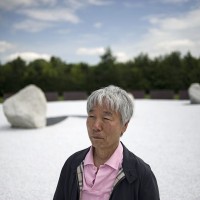-
South Korea Seeks to Increase Regulatory Oversight of Art Market
10/27/2016
 The South Korean Ministry of Culture, Sports and Tourism has passed new legislation imposing strict regulations on art transactions. The law is intended to increase transparency in the art market by requiring more documentation, and establishing regulatory bodies to oversee the authentication of artworks and investigation of forgeries. The law may be implemented as early as August 2017.
The South Korean Ministry of Culture, Sports and Tourism has passed new legislation imposing strict regulations on art transactions. The law is intended to increase transparency in the art market by requiring more documentation, and establishing regulatory bodies to oversee the authentication of artworks and investigation of forgeries. The law may be implemented as early as August 2017.
This new law emerges in the wake of a series of forgery scandals in South Korea, most recently the high-profile case involving South Korean artist, Lee Ufan. As we wrote earlier this year, a lengthy investigation into suspected forgeries of numerous Lee works culminated in expert determinations (and an admission by the forger himself) that the works were forgeries. Lee, however, in a strange twist, claimed them as his own. The Lee scandal, among a series of forgery scandals in the country, prompted the government’s response to try to increase regulatory oversight of the art market.
The law classifies art dealers into the following categories: galleries, auction houses, and other, with different degrees of regulatory oversight accompanying each classification. Galleries and auction houses must register and obtain licenses or permits to operate (currently, these businesses can operate with only a business license, without government registration or approval). Other art dealers must report to the Ministry before engaging in art transactions, or be subject to a fine. The registration system is also intended to deter dealers from illicit dealing by revoking a license based on involvement in forgery cases.
In addition to registration requirements, the law also requires distributors to keep detailed records of each sale, issue official warranties with sales, and submit counterfeit-prevention plans. The law places a burden on art sellers to document all art transactions; and this documentation must be turned over upon request by investigative or taxation authorities. The Ministry has also proposed the establishment of a dedicated police force for art forgeries, and an official organization of researchers and appraisers to authenticate works.
The full details of the legislation have not yet been released. We will update this blog when further details are made available, which should be in early 2017.
Art Law Blog
